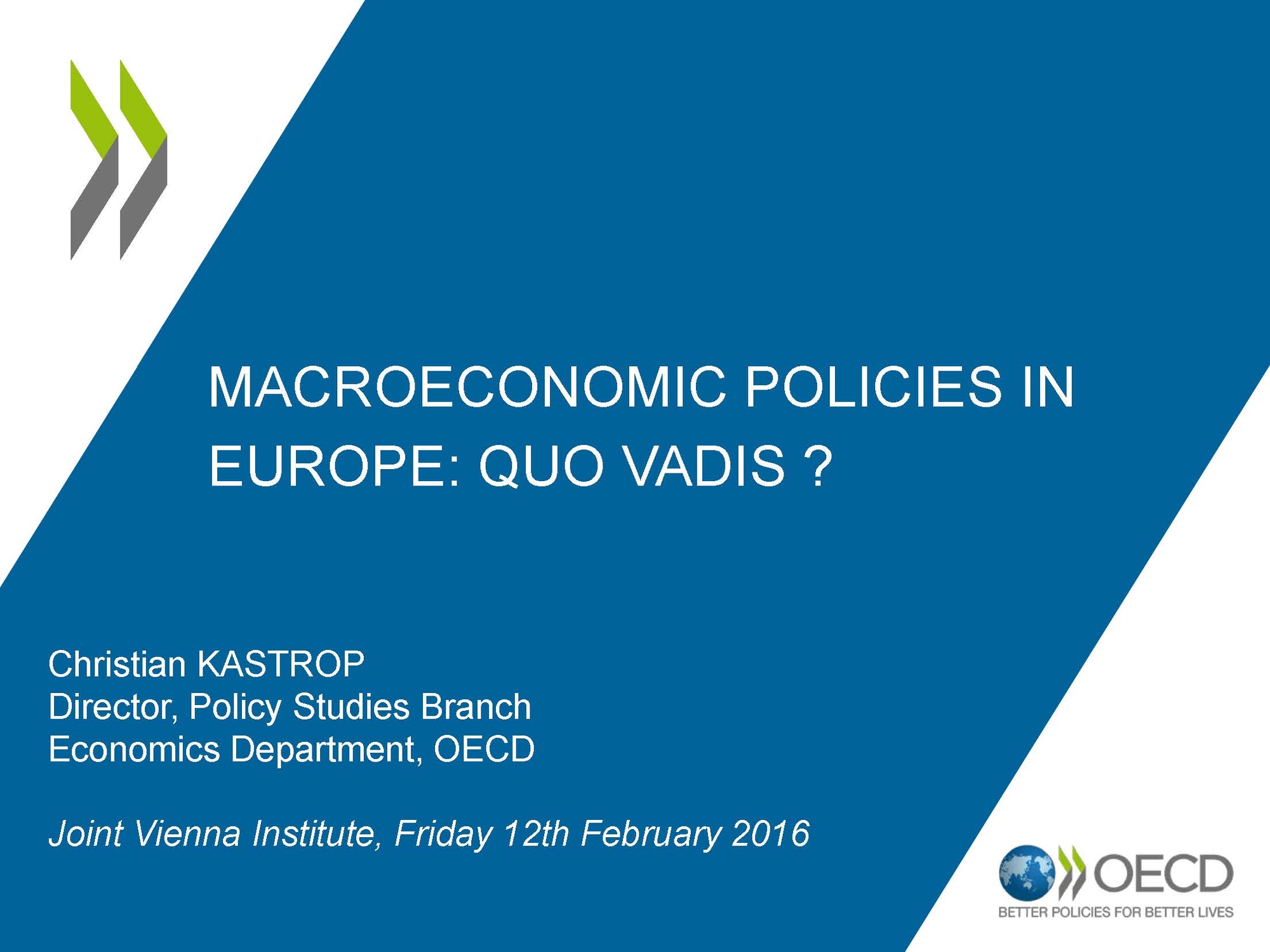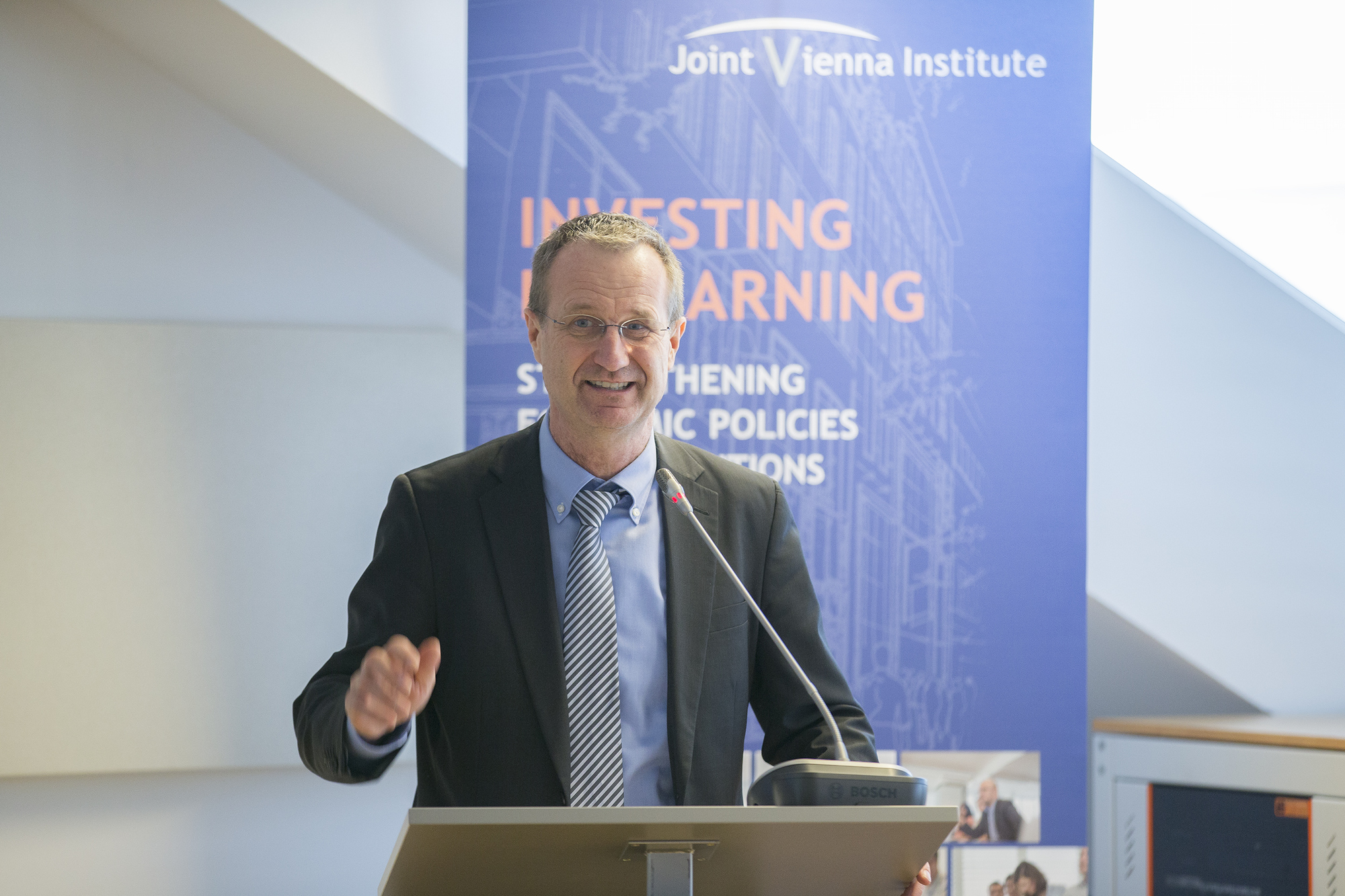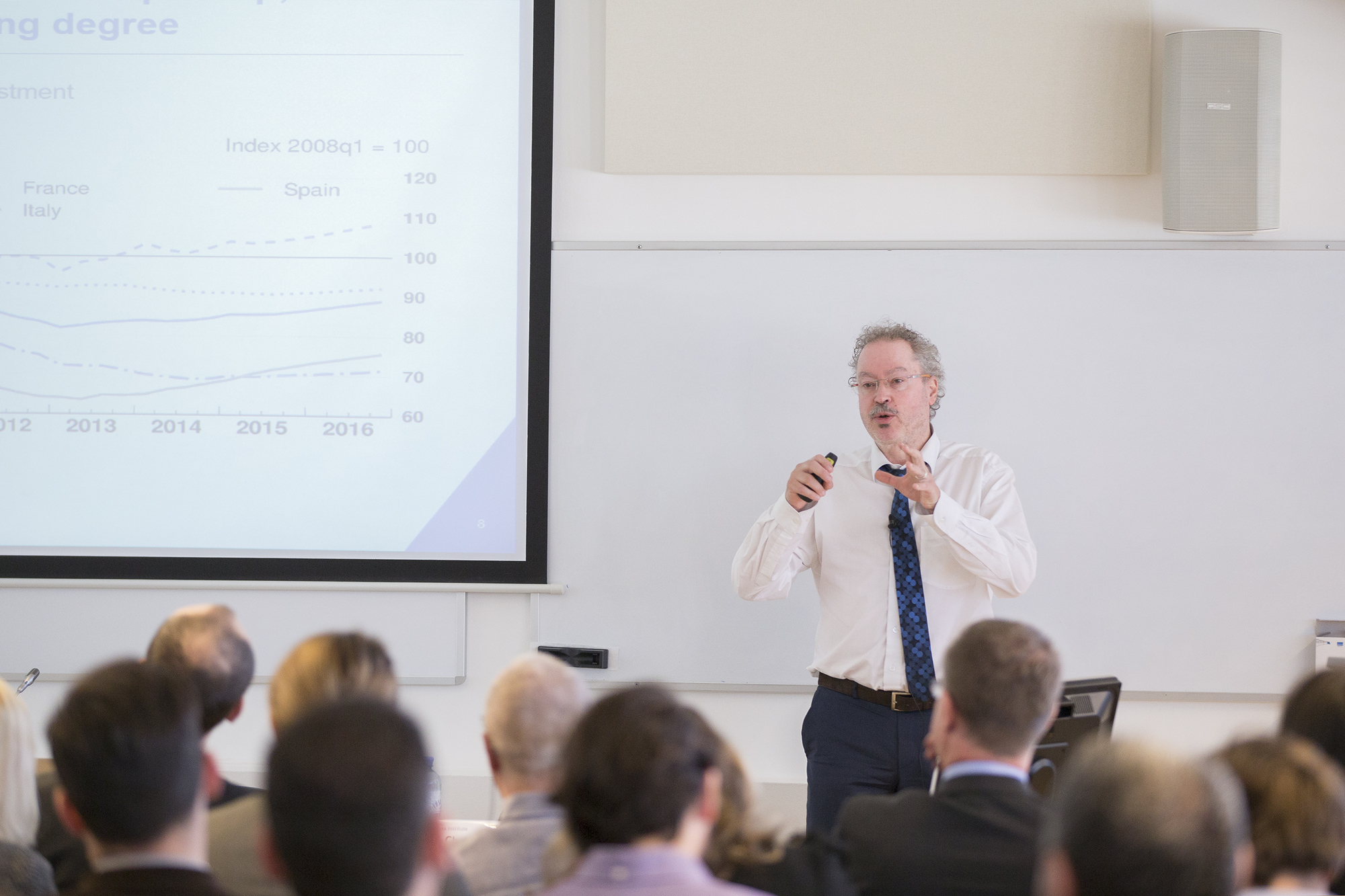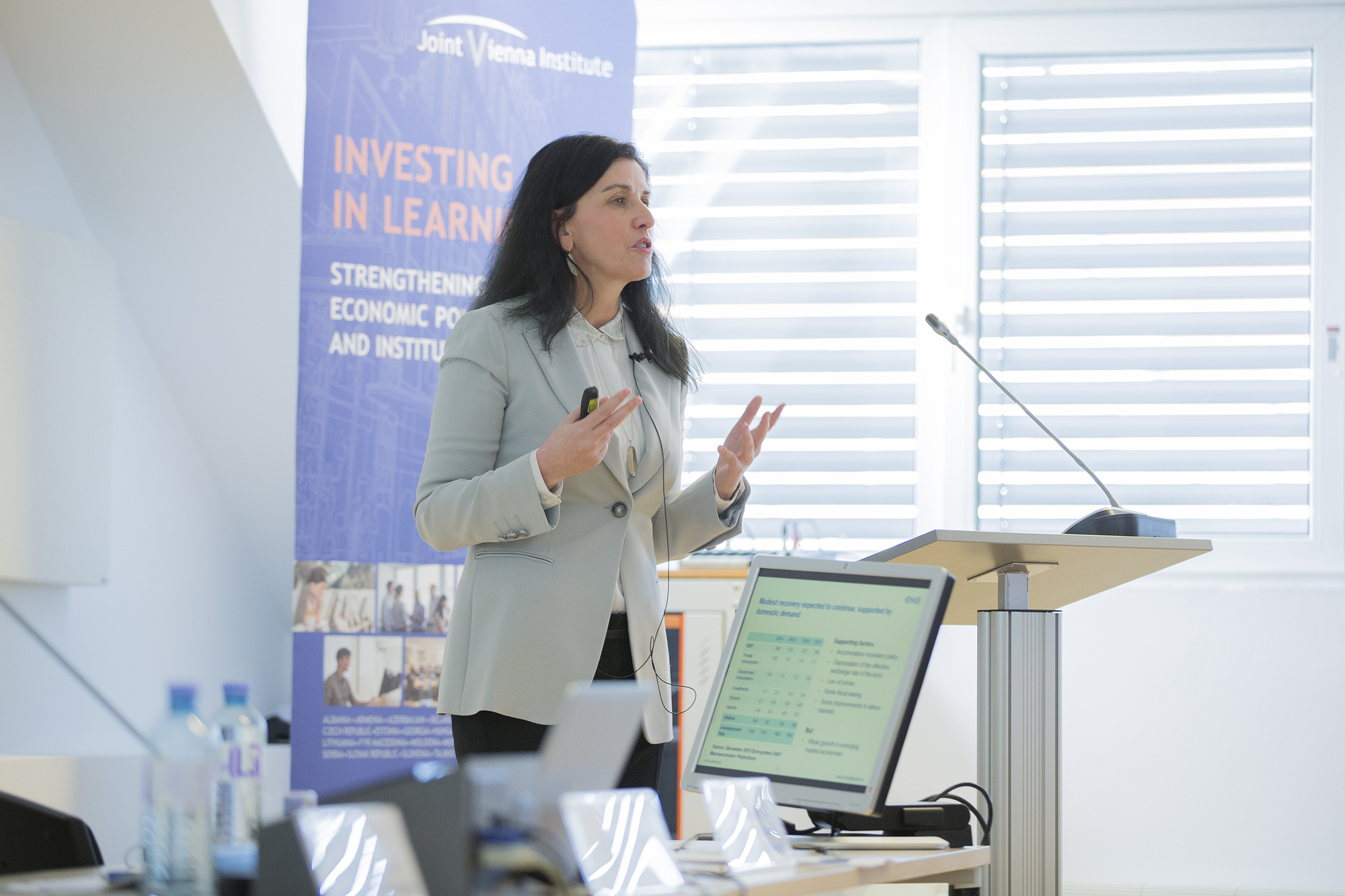Summary
What is the growth outlook for Europe? What have been the effects of the accommodative monetary policy of the ECB? How have advanced countries consolidated their fiscal positions? Mr. Christian Kastrop, Director of the Policy Studies Branch of the OECD Economics Department, presented the OECD views on these issues at an open JVI event on February 12, 2016, chaired by JVI Director Norbert Funke. The discussant was Ms. Helene Schuberth, Head of the Foreign Research Division, Oesterreichische Nationalbank (OeNB).
OECD macroeconomic projections
The OECD recognizes that China, which is now quite important for the world economy, is rebalancing its economy, Mr. Kastrop explained, with manufacturing growth slowing and growth in services (mainly financial) expanding. Because of how this affects the world economy, the OECD has revised its GDP forecast for 2016 downward for both advanced countries and emerging markets. Though the euro area has benefited from the fall in oil prices, the weaker currency, and low interest rates, growth is still likely to stay below 2% for the next two years—mainly because the pickup in investment has been very sluggish. Inflation is also projected to remain low, which means that the ECB can keep monetary policy very accommodative. This has led to negative interest rates on short and medium-term government bonds in many European countries.
Fiscal policy and structural reforms
Turning to fiscal policy, Mr. Kastrop noted that many euro area countries have very little fiscal space. Between 2011 and 2014, countries regained fiscal credibility mainly by using tax increases to consolidate public finances. Since 2014, however, most countries have adopted a neutral fiscal stance, and some can even afford to be more expansionary. In the next few years, the focus will be on expenditure restraints, but Mr. Kastrop warned against cutting public investment. A recent OECD analysis has shown that collective action on public investment would not worsen debt ratios because of the expected effect on GDP growth. However, to boost private investment it will be necessary to further harmonize regulations across the EU. The OECD estimates that a 20% reduction in regulatory heterogeneity could stimulate cross-border FDI within the EU by about 15%.
Structural reforms can make spending more effective and more efficient. The OECD study shows that cuts in only a few spending categories, such as subsidies, increase both long-term growth and equality. With most other fiscal options there are difficult trade-offs between the two objectives, but these can be eased by more careful instrument design. For example, efficiency gains could be achieved in health care and education, and tax revenues could be increased by broadening the tax base.
Asymmetric developments
Ms. Schuberth presented the ECB staff projection for the euro area, noting that it is very similar to the OECD projection, for similar reasons, such as accommodative monetary policy, the weaker euro, low oil prices, some fiscal easing, and some improvements in labor markets. Nonstandard monetary policy measures have not had the expected impact on inflation, with the risk of deflation persisting. A substantial revival of investment in the euro area is critical to achieve sustainable growth and income convergence. In her view, rebalancing has been incomplete and asymmetric: although vulnerable countries have eliminated their current account deficits, countries like Germany and the Netherlands have widened their current account surpluses. This reflects excess savings, and as a result, the aggregated euro area current account surplus is currently higher than China’s.
Extending the growth versus inequality discussion, Ms. Schuberth reviewed some preliminary results of recent OeNB work on how the crisis has impacted the gender wage gap. The gender wage gap had widened in countries with above-average consolidation efforts. This may have been driven by an increase in women’s participation in the labor force (the “added worker” effect) and by the asymmetric impact of austerity measures on public sector employees in crisis countries, with mainly women losing their jobs.
Boosting growth in Europe
The rich discussion that followed mainly touched on how best to support economic growth in Europe. To overcome low growth and low investment, some participants recommended that fiscal policy be more aggressive even at the expense of a temporary breach of fiscal rules. With bond yields low, governments could finance their investment plans cheaply. Such an expansion could be supported by structural policies. However, market sentiment constraints may mean that some countries cannot afford a very loose fiscal policy; one solution for them might be a well-managed sovereign default—although there is no internationally accepted legal structure for that. Some also expressed doubts about whether the way the euro area is constructed is appropriate. While the euro area countries do not form an optimum currency area, over time, it was suggested, the project should bring them closer to the benefit of all involved.
Adam Gersl, Senior Economist, JVI
















